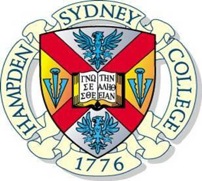Below is a summary of the abstract you submitted. Presenting author(s) is shown in bold.
If any changes need to be made, you can modify the abstract or change the authors.
You can also download a .docx version of this abstract.
If there are any problems, please email Dan at dar78@pitt.edu and he'll take care of them!
This abstract was last modified on May 7, 2019 at 10:18 p.m..

While considerable work has been done by SEA-PHAGES and other groups to characterize Mycobacterium smegmatis cluster A phages, a large number of isolated cluster A phages remain uncharacterized and could potentially add invaluable insights to bacteriophage evolution and lifestyle. In this spirit, we adopted 7 cluster A M. smegmatis bacteriophages from SEA-PHAGES (Rutherferd (A1), Whabigail7 (A2), Veracruz (A3), Bumblebee11 (A4), Scorpia (A5), Jordennis (A6), Expelliarmus (A8)) and did a comparative genomic annotation of the group. As shown by previous SEA-PHAGES work, all 7 phages displayed similar sizes and overall genomic architecture despite their discoveries from disparate locations across the United States. Despite these overall similarities, our study also revealed unique features in individual or subgroups of the 7 phages. Among these features were a 430 basepair gap in the Veracruz genome revealed by BLAST to represent a transfer event from the M. smegmatis genome, immunity repressor proteins in similar locations near the back ends of the Expelliarmus and Bumblebee11 genomes, and a section of the Rutherferd genome that defied the traditional front-half/back-half opposing direction of ORFs traditionally found in this cluster. Taken together, this study reinforces what has been previously revealed about the genomic architecture of M. smegmatis cluster A phages while revealing potentially intriguing individual adaptations that individual phages have made across different geographical locations.

